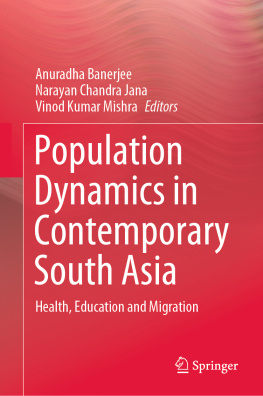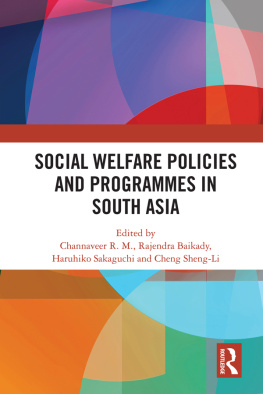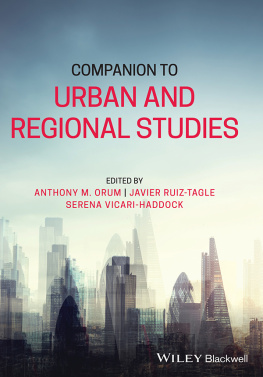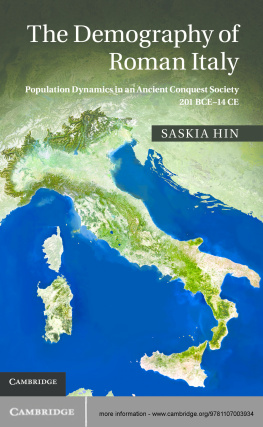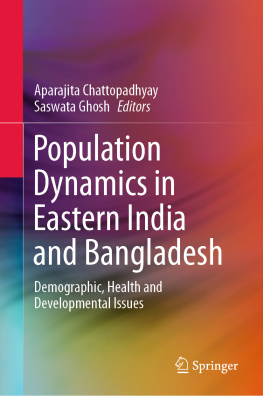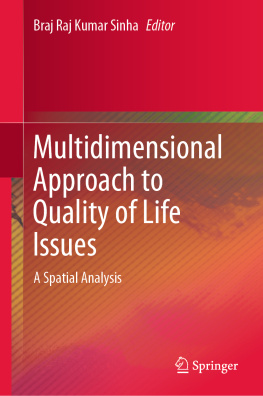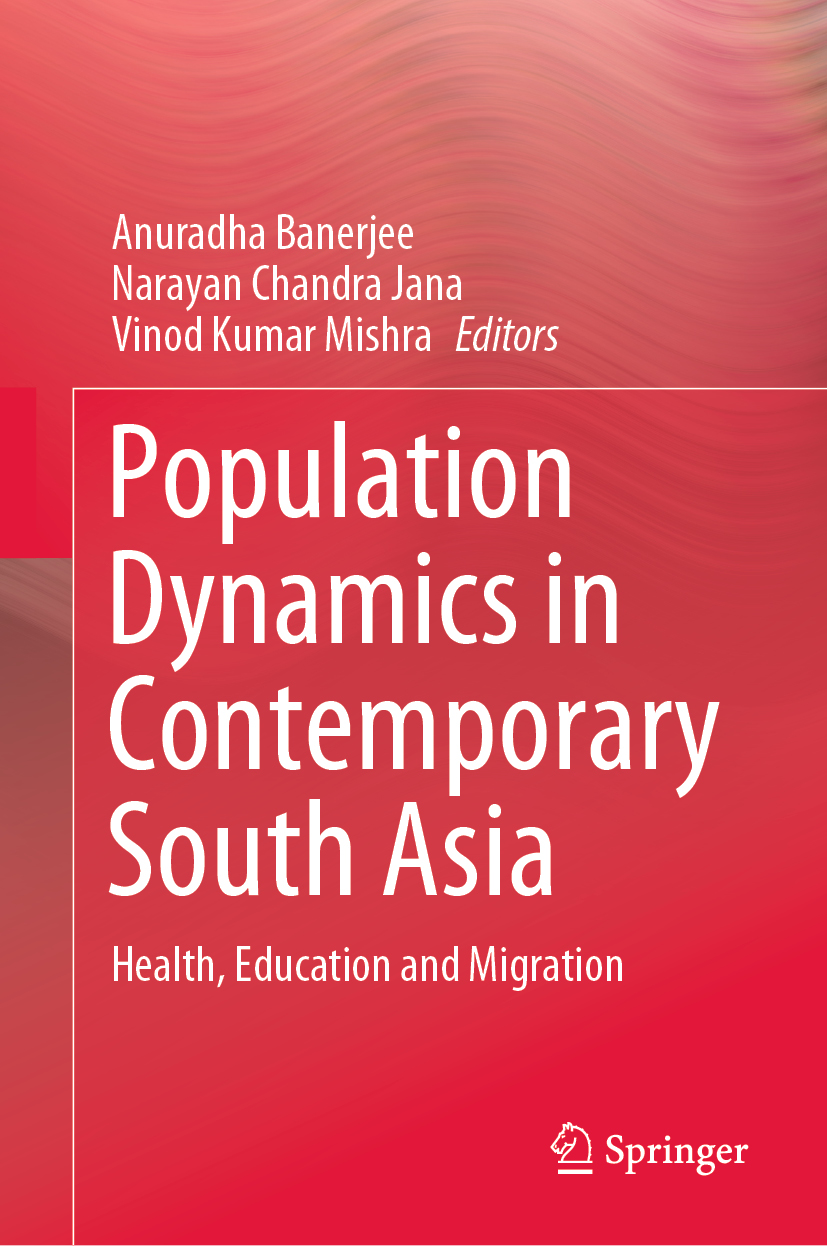Editors
Anuradha Banerjee
School of Social Sciences, Jawaharlal Nehru University, New Delhi, Delhi, India
Narayan Chandra Jana
Department of Geography, The University of Burdwan, Bardhaman, West Bengal, India
Vinod Kumar Mishra
Indian Institute of Dalit Studies, New Delhi, Delhi, India
ISBN 978-981-15-1667-2 e-ISBN 978-981-15-1668-9
https://doi.org/10.1007/978-981-15-1668-9
Springer Nature Singapore Pte Ltd. 2020
This work is subject to copyright. All rights are reserved by the Publisher, whether the whole or part of the material is concerned, specifically the rights of translation, reprinting, reuse of illustrations, recitation, broadcasting, reproduction on microfilms or in any other physical way, and transmission or information storage and retrieval, electronic adaptation, computer software, or by similar or dissimilar methodology now known or hereafter developed.
The use of general descriptive names, registered names, trademarks, service marks, etc. in this publication does not imply, even in the absence of a specific statement, that such names are exempt from the relevant protective laws and regulations and therefore free for general use.
The publisher, the authors and the editors are safe to assume that the advice and information in this book are believed to be true and accurate at the date of publication. Neither the publisher nor the authors or the editors give a warranty, expressed or implied, with respect to the material contained herein or for any errors or omissions that may have been made. The publisher remains neutral with regard to jurisdictional claims in published maps and institutional affiliations.
This Springer imprint is published by the registered company Springer Nature Singapore Pte Ltd.
The registered company address is: 152 Beach Road, #21-01/04 Gateway East, Singapore 189721, Singapore
Foreword
Geography studies the characteristics of space and place. Geographers identify and analyse the spatial patterns of humanenvironment relations that shape our lives and society. I am pleased that the research volume entitledPopulation Dynamics in Contemporary South Asia: Health, Education and Migrationis being edited by our three valuable colleagues, Prof. Anuradha Banerjee, Prof. Narayan Chandra Jana and Dr. Vinod Kumar Mishra, in honour of Eminent Population Geographer of IndiaProf. Sudesh Nangia. I have worked with Professor Nangia when she was President of the National Association of Geographers, India. I have been very much impressed with her intellectual capability and her efforts in promoting Geography at policy level. It is not only Habitat III but 2015 UN Sustainable Development Goals that has set the stage for the next 15 years of quality global human development. All of the different goals apply to human beings for making development inclusive, safe, resilient and sustainable. Geographers ask relevant questions in order to understand human response in the context of interdisciplinarily.
The volume includes 17 papers coming across challenging areas of the population geography. About 32% of the population of India is urban. The north-eastern region has the lowest density of population. The southern region has had highest density consistently until 1991 census, after that eastern region occupied the highest density in the country. The growth rate of population has declined from 25% during 19711981 to 17.6% between 2001 and 2011. According to NFHS report, Himachal Pradesh has shown a faster decline in total fertility rate (TFR) in recent years as compared to its neighbouring states of Punjab and Haryana. The population density of India is 446 per sq km (1156 people per sq mi) in comparison of 117 persons per sq km in 1951. With 356 million people between ages of 10 and 24 years, India has the worlds largest young population despite having a lower population size than China. With 269 million young people, China has the second largest young population followed by Indonesia (67 million), USA (65 million), Pakistan (59 million), Nigeria (57 million), Brazil (51 million) and Bangladesh (48 million) according to the United Nations Population Funds (UNFPA) State of the Worlds Population Report. The discipline of Geography promotes trans-disciplinary research incorporating participatory processes, facilitating engagement with and involvement of societal stakeholders together with developing scientific networks underScience-Policy Interface(SPI). The volume will contribute in this direction.
The book includes four parts, viz. (i)Social IssuesHealth and Health Care Services, (ii)Socio-economic IssuesEducation and Occupation, (iii)Mobility and Migrationand (iv)Quality of Life. Health is a critical ingredient of human development. Indias population composition has witnessed a significant change with decline in mortality beginning in the 1920s and subsequent fertility decline since 1970s due to governments family planning initiative. Indias birth rate declined from about 45 per 1000 population at the time of independence to 19.3 births/1000 population (2016 estimated). On the other hand, due to increased awareness about health measures, control of the communicable diseases and improvement in public health, mortality has declined over the last several decades. According to the recent ICMR report, non-communicable diseases have increased significantly. Infant mortality rate has continued to be the challenging area for family planning. Life expectancy has increased from about less than 40 years at the time of independence to 68.5 years comprising of male (67.3 years) and female (69.8 years) (2016 estimated). Thus, human health is very much linked with the protection of human rights.
In 1989, the Governing Council of the United Nations Development Programme recommended that 11 July be observed by the international community as World Population Day. On the occasion of the International Population Day 2018, we should commit ourselves for utilising vast young population for transforming towards Healthy India particularly focussing on family planning as a human right. Indian government is trying well to convert the young population as a qualitative asset. Indian population with less than 24 years age comprises 46% of total population. There is need for an initiative to bring this youth population into mainstream workforce so that they become asset for country by linking various developmental schemes like Make in India, Skill India, Startup India, Standup India, etc.
In order to contribute towards Habitat III, the volume recognises the constraints due to geographical diversity in income level, culture, governance, capacity and most importantly availability of data for implementing a systems analysis based on spatial information technology approach. Urban environmental degradation is a threat to the sustainability of future, particularly in the developing world including India. The four dimensions of sustainable development, viz. economic efficiency, social equity, environmental protection and institutional effectiveness, all contribute to and are affected by urban disasters. The advancement in geospatial technology has helped in mitigating the risk of natural as well as man-made disasters. This volume is well equipped to explore the above issues. The volume also attempts to contribute in the above context by focussing on the geographical dimension of population dynamics in the South Asia. The future research initiatives for sustainability need to be appropriate, indigenous, smart and solution-orientated. It should be accessible with effective trans-disciplinary collaboration. The future research should also focus on increasing capacity building through participation of local level policy-makers, academicians and other sectors of civil society in science, technology and innovation.

